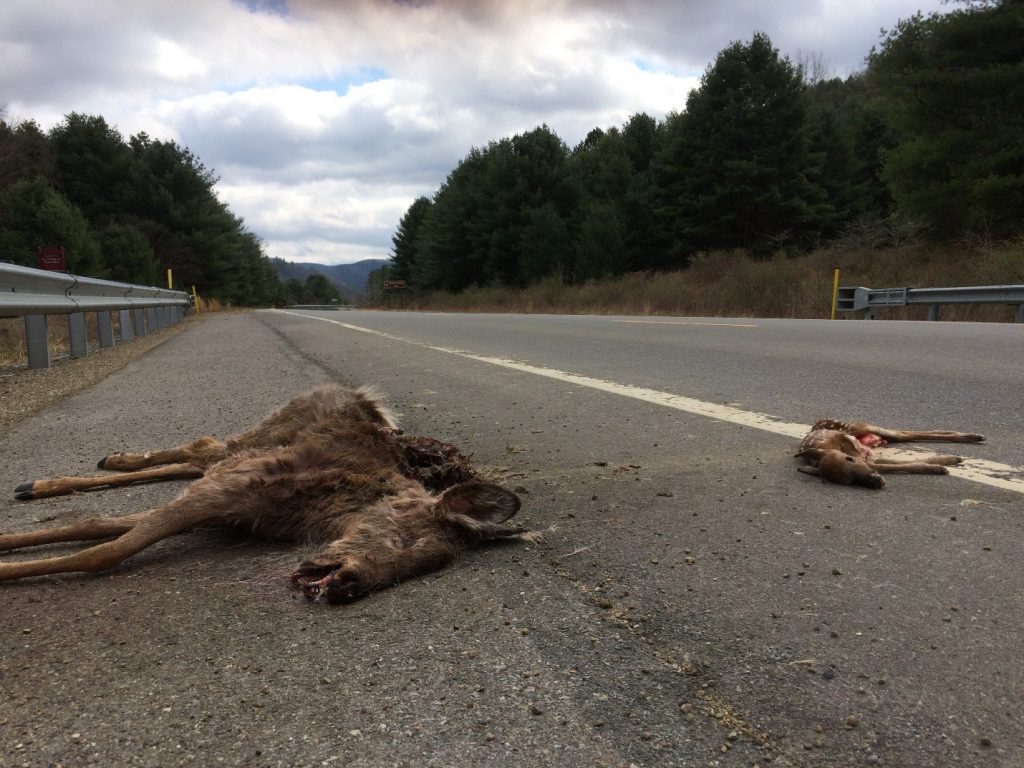New in town and looking for a conversation icebreaker at the local sporting goods store? Fawning season is just around the corner. They provide the annual bump to the deer population, tasty snacks for many critters, and endless conversation to hunters. The debate usually focuses around the tasty snackers and their effect on that bump to the deer population.
Because fawn predation and subsequent survival is such a popular and contentious topic, it has spawned much research. We’ve done our fair share here in Pennsylvania. If fact, we have monitored the fates of more fawns, for more years, than anyone else in North America. The latest was a 3-year study looking at fawn survival and predator distribution and abundance.
After many years, fawns, and photos, we have finally arrived. We are whipping out all the data and addressing many of those conventional “wisdoms.”
But not all at once and not here today. This is a blog and not a dissertation. There is a lot to cover. Here’s what we’ll be rolling out in the coming weeks.
Overall patterns in fawn survival
To date, there have been over 30 studies of fawn survival – from North Dakota, to Alabama, to New Brunswick. There is strength in numbers. Tess Gingery, who recently completed her M.S. degree in Wildlife and Fisheries Science, looked at all these studies and searched for patterns.
How does landscape context affect fawn survival? Does fawn survival vary with deer density? Is the cause of fawn mortality different in different parts of North America? Tess is on it!
Have predators and fawn survival changed?
The first fawn survival study in Pennsylvania was over 15 years ago. If you listen to some, coyote populations have increased dramatically over the past decade or so. Is it true? Has fawn survival changed in the same time period?
Because Pennsylvania has conducted two separate studies of fawn survival (2000-2001 and 2015-2017), and the Pennsylvania Game Commission monitors predator populations, we will answer those questions as well.
Predators
We all know black bears, coyotes, and bobcats are the primary predators (excluding humans) of fawns. Do they compete for those fawn snacks? How do they share space? Are wise fawns in different places than predators? Or do they just deal with different predators in different places? Or are all predators everywhere?
Asia Murphy is working on these questions for her Ph.D. in Ecology. For 2 years she used hundreds of game cameras to collect thousands of photos of predators and deer to see how they are distributed in time and space.
The Big Picture
Finally, we will look at other research being done on predators and deer in relation to the environment. Deer and predators are not living in a vacuum – they are part of a larger ecosystem. This means that management actions on deer and predators – or some other aspect of the environment – have consequences, perhaps unintended. You know that saying in ecology about everything being connected to everything else.
By only looking at deer and predators and fawn survival, we may be missing the forest for the trees! What else is connected to these players? If we pull on one, will we unravel another?
The question to end all questions…maybe
Ultimately, we will answer the question of whether predation and fawn survival is something we should be worried about, and if so, what we need to do about it.
So buckle up! We’ve got a lot of information coming your way.
-Duane Diefenbach and Jeannine Fleegle
Other articles in this series:
Bunches, Heaps, and Gobs of Fawns
Land of the Living
A Million Ways to Die
Next article in this series:
If you would like to receive email alerts of new blog posts, subscribe here.
And Follow us on Twitter @WTDresearch
